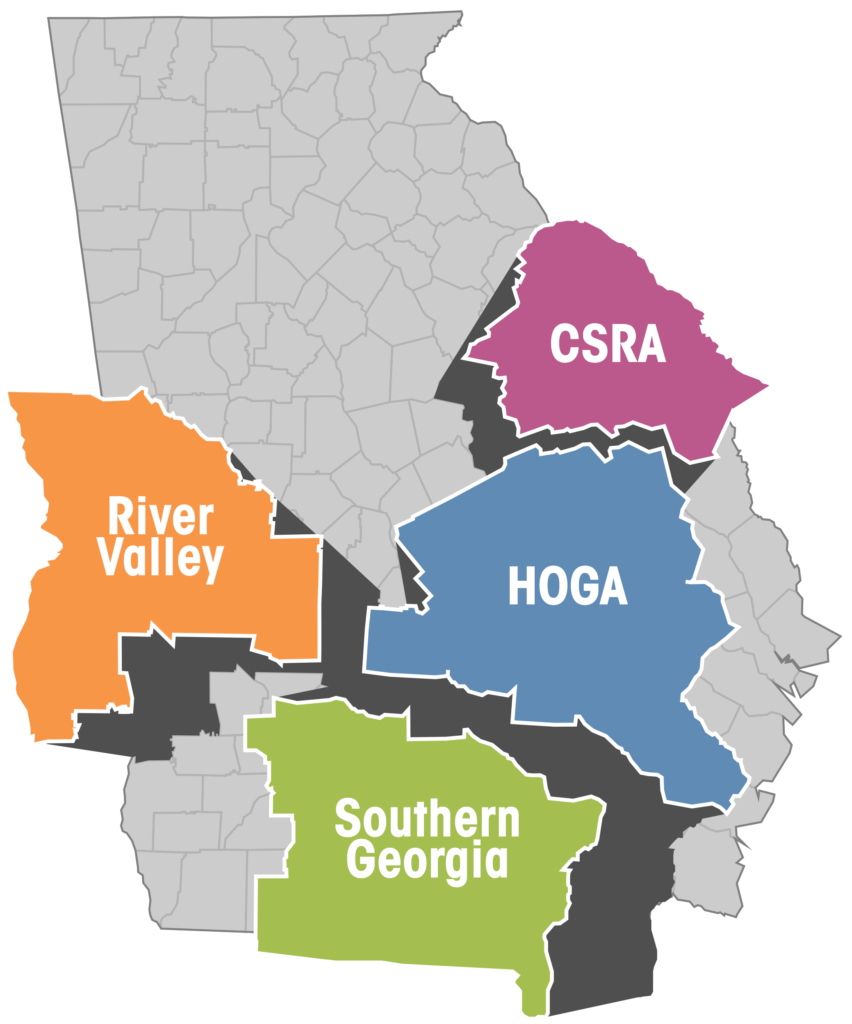
ATLANTA – Georgians in 12 regions across the state voted a decade ago to pay a penny sales tax for 10 years to fund a backlog of critical transportation projects.
While most of the regions – including metro Atlanta – rejected the tax, voters in the regions surrounding Augusta, Columbus, and Dublin passed the measure. Six years later, voters in a fourth region in South Georgia anchored by Valdosta adopted the tax.
Nearly 900 projects later, the Transportation Investment Act (TIA) marked its 10th anniversary this year as a resounding success, state Commissioner of Transportation Russell McMurry told an audience of Georgia lawmakers, state agency heads, and lobbyists Dec. 5.
“We’re going to deliver every project that was promised and finish in the black,” McMurry said during the Biennial Institute, an orientation session for newly elected legislators at the University of Georgia.
Before each regional vote, roundtables of local elected officials – with public input – chose projects they wanted to fund with the tax.
“[Voters] could look at the projects and know what the money was to be spent on,” said Greg Morris, a member of the State Transportation Board representing Georgia’s 12th Congressional District, which includes parts of two of the regions participating in the TIA program. “That made it an easy sell.”
Of the 871 projects in the three original participating regions funded through the tax, 764 went to the Heart of Georgia Altamaha (HOGA) region anchored by Dublin. The Central Savannah River Area (CSRA) region surrounding Augusta received 84, and just 23 went to the River Valley region surrounding Columbus.
The difference in those numbers was a function of cost, said Kenneth Franks, TIA program administrator for the Georgia Department of Transportation. The HOGA region had a need for a lot of smaller projects, mostly resurfacing and maintenance, Franks said.
“You’ve got cities and counties in that region that hadn’t had a dedicated source of transportation funding for years,” he said. “The other two focused on major projects … the bigger corridors and interchanges.”
But there were exceptions to that trend. By far the largest TIA project funded thus far is in the HOGA region, a $112.3 million widening of U.S. 1 in Toombs and Appling counties from two lanes to four. The project also includes replacing a bridge over the Altamaha River.
The next largest TIA project is $47.9 million in the River Valley region to widen U.S. 280 from Lake Blackshear to Cordele. The project includes construction of a new two-lane bridge over Lake Blackshear parallel to an existing bridge to create four lanes.
In the Central Savannah River Area, the largest TIA project is $41.1 million to widen Old Petersburg Road in Columbia County from Baston Road to Old Evans Road and on to Washington Road.
The project list in the three participating TIA regions has proven popular enough that voters not only passed the tax in 2012 but agreed subsequently to extend it another 10 years. In each case, the renewal of the tax passed by larger margins than the original votes.
Voters in the CSRA region renewed the tax in a 2020 referendum that received 71% of the vote, up substantially from the 53.7% support the tax received in 2012.
HOGA and River Valley region voters approved an extension of the tax last May with 63.5% and 55.3% of the vote, respectively.
“In the regions we got the opportunity to work with, we have been able to develop a relationship,” Franks said. “We’ve shown them we can deliver the projects they expected.”
The track record the TIA program was building in the three participating regions drew attention from cities and counties in the Southern Georgia region anchored by Valdosta. It became the fourth region to join the program when voters there passed the transportation sales tax in 2018.
“TIA’s been a lifeline for smaller communities that don’t have the tax base,” said Tim Golden, a member of the State Transportation Board representing the 8th Congressional District, which includes much of the Southern Georgia region.
Franks said the success the TIA program has shown in the Southern Georgia region in its first four years has generated resolutions in a handful of counties calling for renewing the tax when it comes due to expire.
But Franks said he doesn’t expect additional regions to put regional transportation tax measures on their ballots anytime soon.
Counties in two other regions – the Three Rivers region around LaGrange and the Southwest Georgia region – expressed interest, he said. However, voters in so many counties in those regions have approved single-county transportation taxes that there’s little point of pursuing the regional option, he said.
Morris said a long list of projects in his HOGA region are now complete that wouldn’t have been without the TIA program because local governments simply couldn’t afford them.
“Pulling these projects out of some of these counties was impossible,” he said. “TIA made it possible. … It’s been transformative.”
This story is available through a news partnership with Capitol Beat News Service, a project of the Georgia Press Educational Foundation.